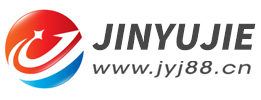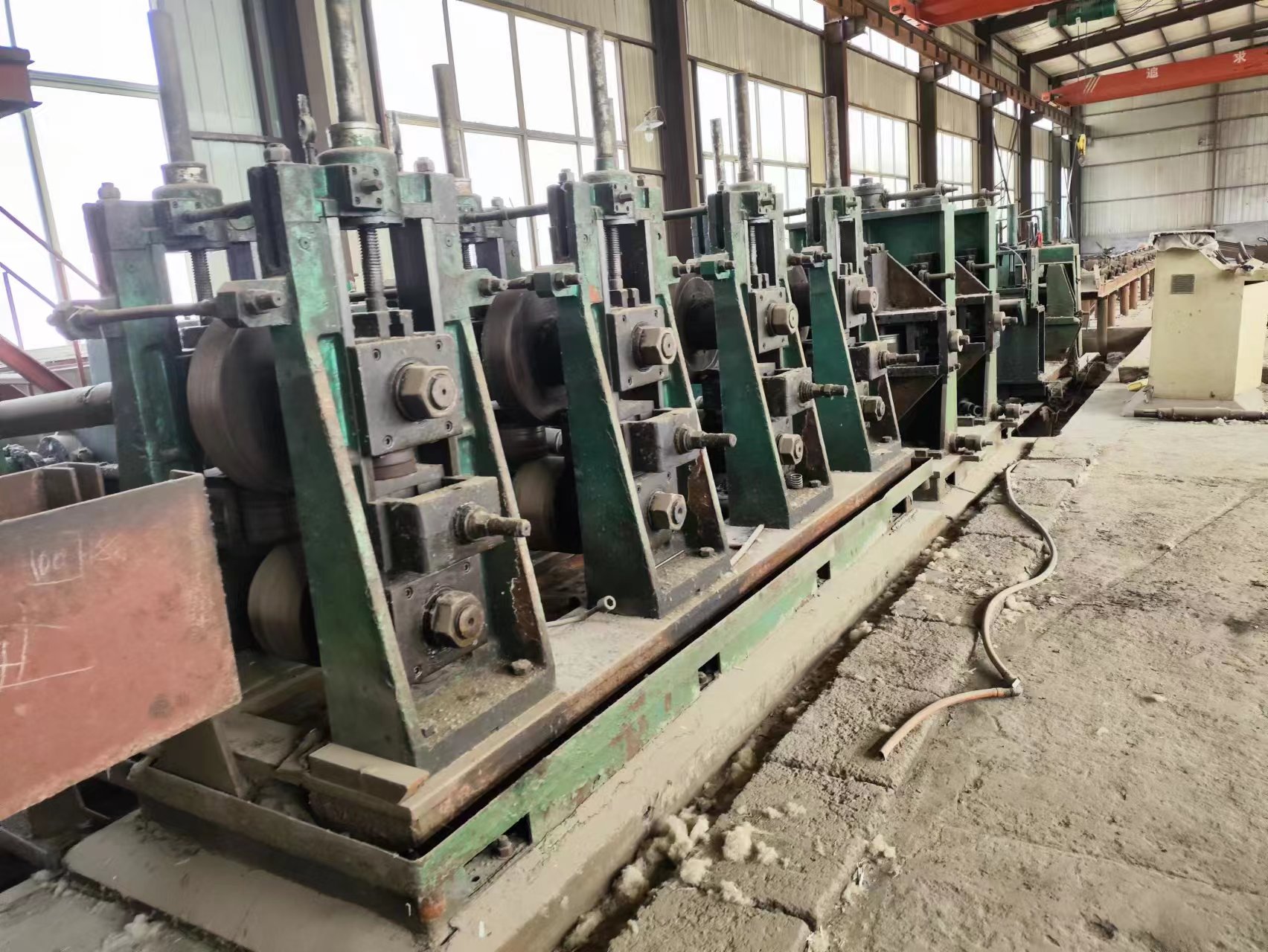The role of straightening machine in used welded pipe equipment
- Sort:Information
- Auth:
- Source:
- Release time:2022-08-12 11:30
- Pvs:
【概要描述】Straightening machine is one of the indispensable finishing equipment for the production line of used welded pipe equipment to produce fluid pipe, structural pipe and thick-walled welded pipe.
The role of straightening machine in used welded pipe equipment
【概要描述】Straightening machine is one of the indispensable finishing equipment for the production line of used welded pipe equipment to produce fluid pipe, structural pipe and thick-walled welded pipe.
- Sort:Information
- Auth:
- Source:
- Release time:2022-08-12 11:30
- Pvs:
Straightening machine is one of the indispensable finishing equipment for the production line of used welded pipe equipment to produce fluid pipe, structural pipe and thick-walled welded pipe. Although the welded pipes are straightened by random straightening rollers, there are still many less than 2%. The straightness requirements are required, which requires the straightening of these welded pipes with the aid of a straightening machine to meet the straightness requirements.
In addition, in the continuous production process of welded pipes, affected by the thickness, width, hardness and other factors of the tube blank, as well as the sudden change of the coolant, the invisible damage of the bearings in the operating parts of the welded pipe unit, etc., it is bound to destroy the balance and maintain the straightness of the welded pipe before this. The straightness of the welded pipe changes more or less due to the force of the degree of force. If the cause is found from the unit and various parts, the production process will be cumbersome, so it needs to be straightened.
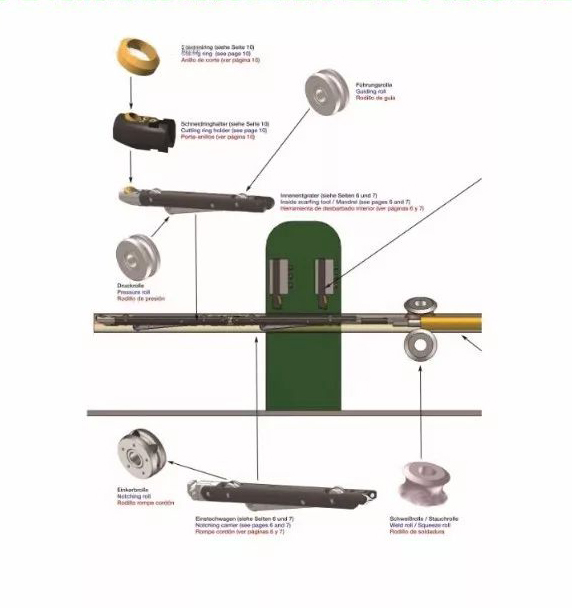
For some welded pipes that have undergone weld annealing and full-tube heat treatment, the straightness is difficult to meet the requirements and must be straightened with the aid of a straightening machine.
There are also some pipes of the welded pipe unit, although the dimensional tolerance and straightness are up to the standard, but the ovality is very poor. According to the straightening principle, the pass of the straightening roller can also play a certain role in correcting the deviation of the welded pipe with large ovality in the process of straightening the welded pipe.
The straightened pipe is beneficial to the smooth progress of subsequent chamfering, hydraulic testing and packaging marking.
Straightening principle
The basic theory of welded pipe straightening of used welded pipe equipment is that in order to achieve a certain accuracy requirement after straightening the welded pipe in the bent state, it is necessary to produce a corresponding reverse elastic-plastic deformation of the welded pipe. When the welded pipe is straightened by the upper and lower pairs of inclined rollers, it rotates circumferentially and moves longitudinally at the same time. During this process, it has to undergo two deformations:
(1) The pipe between a pair of straightening rollers is bent. The limit length of the section is the length of the roll body, and the welded pipe undergoes multiple elastic-plastic repeated bending in the straightening roll, so that the original bending degree of the welded pipe is improved and the straightness is achieved in the longitudinal direction.
(2) Under the action of the straightening roller hole profile, the ovality of the cross section of the welded pipe is partially improved.
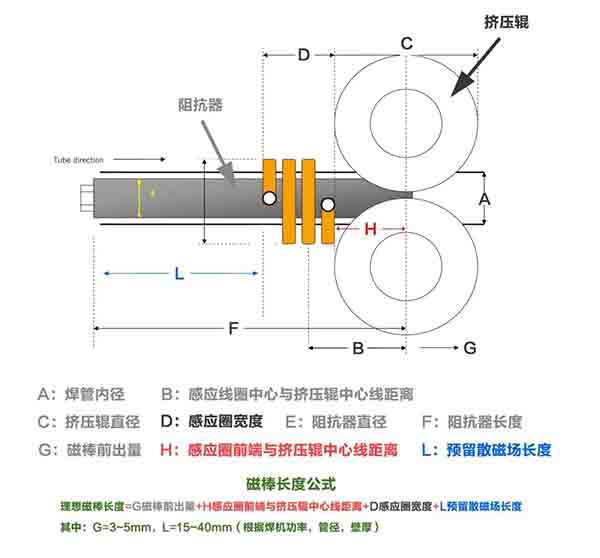
Use of straightening tubes
In order to ensure the straightness and ovality of the straightened welded pipe, the straightening sample pipe must meet the requirements of four aspects:
(1) The outer diameter error of the straightening sample tube should be less than ±0.05mm, and the ovality should be less than ±0.03mm.
(2) The straightness of the straightening sample tube is better, and the bending degree is not more than 1‰.
(3) The straightening sample tube should be made of materials with good rigidity, high strength and not easy to deform; the sample tube should not be placed flat, and it is not allowed to be placed obliquely, because the long-term oblique placement of the slender shaft sample tube will affect the straightness.
(4) The length of the sample tube for straightening should not be shorter than the length of the center line of the three straightening rollers. Generally, the length of the sample tube for φ76 straightening machine should be greater than 1.5m, and the length of the sample tube for φ114 straightening machine should be greater than 2.5m.
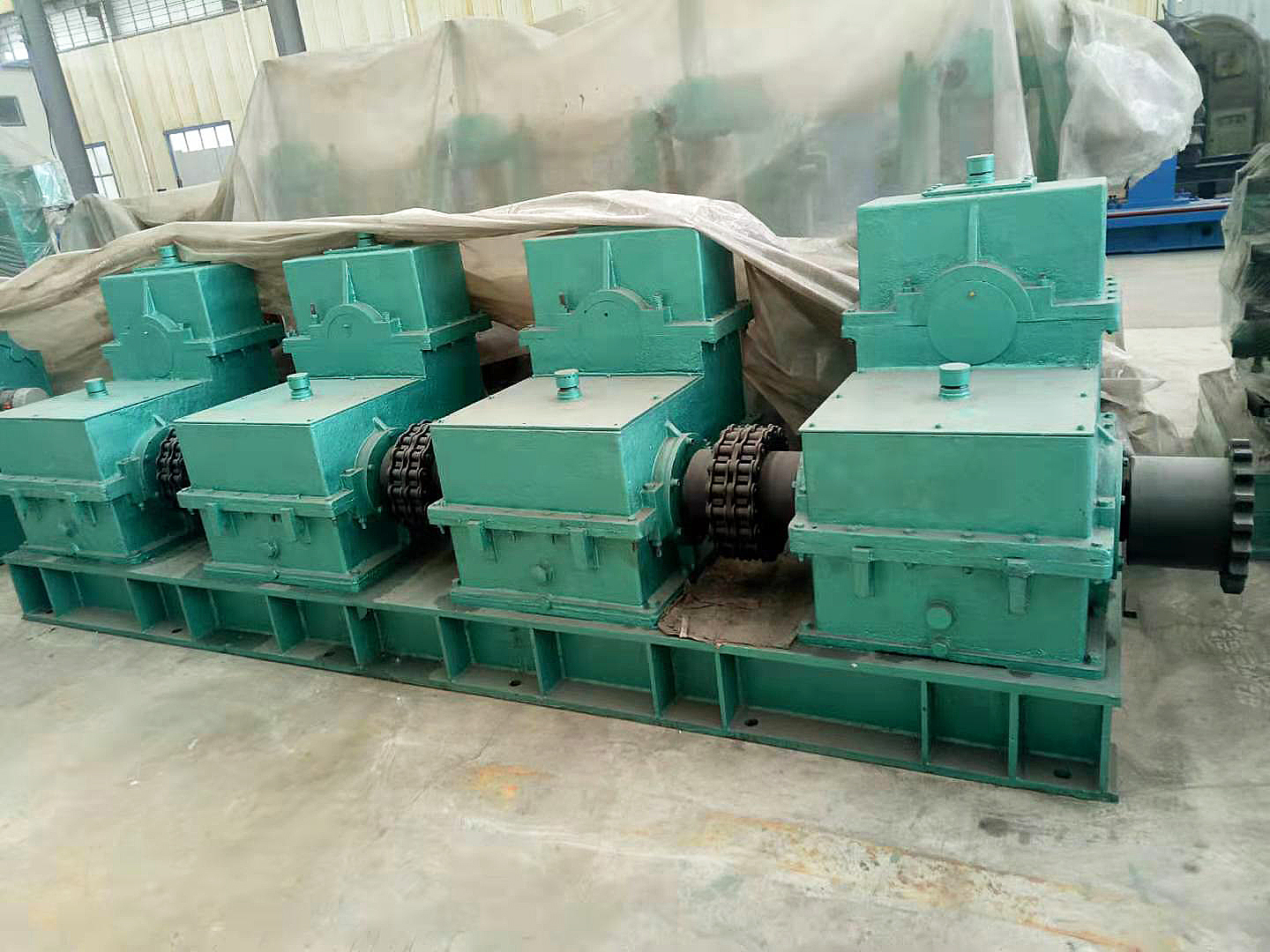
Adjustment amount of straightening roller
When the passing space of the straightening roller is adjusted, it is generally not suitable to change it easily. The adjustment amount required for straightening is realized by the upward movement or downward pressure of the intermediate roller, but the adjustment amount should be controlled within 4~6mm, otherwise the tube surface will be easily damaged. The straightening roller presses out the spiral marks, which affects the appearance and outer surface quality of the welded pipe.
The adjustment rule of the straightening roller is: the adjustment amount of the welded pipe with high hardness, large diameter, thick wall and serious bending should be larger; otherwise, the adjustment amount should be smaller.

Straightening speed
Thick pipes, large pipes and pipes that are not too curved can be straightened faster; thin-walled, small pipes, and pipes with large curvature must be straightened slowly, because the speed is too fast. Under the action of centrifugal force, it will bend more and more, and even bend the tube that is not very bendable. During the actual operation, if the tail flick is found to be serious, the straightening speed must be reduced immediately or the straightening must be suspended.
Usually, a detachable "n" type protective cover is specially designed and installed on the conveyor rollers 3~4m before and after the leveler to safely control the swinging range of the pipe head and tail.
The above is the working principle and use method of the straightening machine in the used welded pipe equipment, I hope it can be of some help to you. Our company has many brands and wide resources, there is always one suitable for you. You only need to inform us of your pipe manufacturing needs, and our company will provide you with second-hand welded pipe equipment that really suits your needs. Welcome new and old customers to come to consult and order.
More News

Time of issue : 2023-10-31

Time of issue : 2023-10-28

Time of issue : 2023-10-25

Time of issue : 2023-10-22
Wechat: 13392281699
Email: zty@usedpipemill.com
Company address:No. A99, East Lecong Avenue, Lecong Town, Foshan City, Guangdong Province
Recommendation
Online Inquiry
LINK
Contact Us
Tel (wechat): 13336487288
Wechat:+86 13336487288
WhatsApp:+86 13336487288
Email: zty@usedpipemill.com
Address: No. A99, Lecong Avenue East, Lecong Town, Foshan City, Guangdong Province


